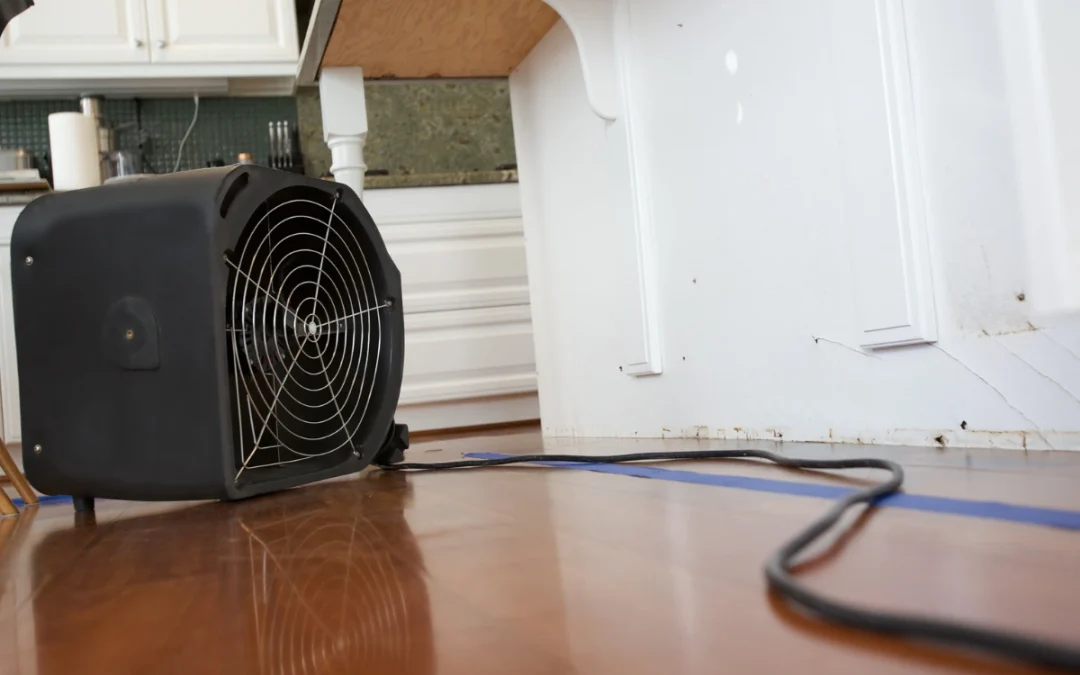Water damage can hit your home at any time, whether it’s from a burst pipe, a leaking roof, or heavy rain. When it happens, acting quickly is essential to prevent a small problem from turning into a major issue. Knowing how to respond can help you manage water damage removal effectively. In this guide, you will find nine practical tips to help you safely restore your home.
1. Act Fast to Minimize Any Type of Water Damage
In residential water damage restoration, every second counts. The longer water sits, the more it can soak into walls, floors, and furniture, leading to mold growth and even structural issues. As soon as you notice water damage, start taking steps to address it.
2. Prioritize Safety First
Before starting to restore water damage, always make sure it’s safe to enter the area. Turn off any electrical sources near the water-affected area to prevent shocks or accidents. Also, wear protective gear like gloves and boots if you need to touch or walk through water, as it could contain contaminants.

3. Stop the Source of the Water
Immediately stop the water source to limit the damage. If a pipe bursts, turn off your main water valve; for roof leaks, cover the area with a tarp to keep water out. For appliances, unplug them if it’s safe to avoid further issues, and check for any smaller leaks around sinks or toilets that might need a quick fix.
4. Remove Standing Water Quickly
Eliminating standing water is an essential step in the water damage removal process. Use a wet/dry vacuum if available, or grab a mop and buckets. The goal here is to get rid of as much water as possible to prevent it from seeping into walls and floors. For more severe flooding, you may need to rent a professional water pump or call for expert residential water damage restoration.
5. Dry Out Affected Areas Completely
Drying is an important step that should be done carefully. After water removal, open all windows and doors to allow for better airflow. Use fans and dehumidifiers to help dry the area quickly and stop mold from growing. If the water damage is extensive, you may want to invest in high-powered air movers or consult with an experienced home water damage restoration team for faster and more thorough drying.
6. Clean and Disinfect Surfaces
Water damage can leave behind contaminants, especially if a flood causes it. Clean and disinfect any affected surfaces to remove bacteria and prevent mold. Use a good household cleaner or a bleach solution (1 cup of bleach to 1 gallon of water) for hard, non-porous surfaces like tiles and countertops. For more delicate materials like wood, you may need a specialty cleaner or help from a water damage cleanup professional.
7. Check for Signs of Mold Growth
Mold thrives in moist environments, so checking for signs of mold should be a priority in any home water damage restoration. Inspect dark, damp areas, especially behind walls, under carpets, and in crawl spaces. If you spot mold, you might need to bring in a specialist to handle removal, as mold can be hazardous to your health and difficult to eliminate without professional equipment. A mold inspection can help identify the extent of the problem and ensure proper remediation.
8. Remove Damaged Materials
Unfortunately, some materials damaged by water can’t be saved. Carpets, drywall, and insulation may need to be replaced if they’ve absorbed a significant amount of water. Damaged items that are beyond repair can harbor bacteria and encourage mold growth, so it’s best to dispose of them properly. When removing these materials, handle them with care and wear protective gear. Staying on top of home maintenance tasks like sealing cracks in walls and replacing old insulation can help minimize the risks of extensive water damage.
9. Call in Water Damage Restoration Services if Needed
Professional restoration from water damage can be a game-changer to properly remove water from your property. Water damage restoration professionals have the specialized equipment, expertise, and experience to handle large-scale water damage and prevent future issues. If you’re overwhelmed, don’t hesitate to reach out to Disaster Recovery Restoration for a free quote and personalized plan to restore your home safely.
Why Get Professional Restoration From Water Damage
While it’s possible to tackle some water damage issues on your own, professional assistance can offer several key advantages. Restoration experts have advanced tools to detect hidden moisture that may go unnoticed, preventing long-term issues like mold. They also use high-powered drying equipment, allowing for a faster and more effective drying process. Professionals can identify hidden structural issues, ensuring your home is safe and reducing the risk of future water damage.


Take Control of Water Damage Removal
Water damage is a serious issue, but with the right approach, you can restore your home efficiently and prevent lasting effects. From acting fast to thorough drying and cleaning, each step of restoration from water damage plays a crucial role in preserving your home’s structure and value. If you’re an apartment owner, having the right multifamily property insurance can protect you against huge repair costs and rental income loss. Remember, while DIY efforts can handle minor cases, sometimes it’s best to let the professionals step in for a complete water damage restoration.

ROC 349012
Disaster Recovery Restoration is your #1 water damage restoration company in Phoenix Metroplex. Our team is ready 24/7/365 to provide water damage restoration solutions to both residential and commercial customers alike.
Contact Info
Disaster Recovery Restoration
927 W 23rd St, Tempe, AZ 85282, United States
1901 E University Dr, Suite 333, Mesa, AZ 85203

